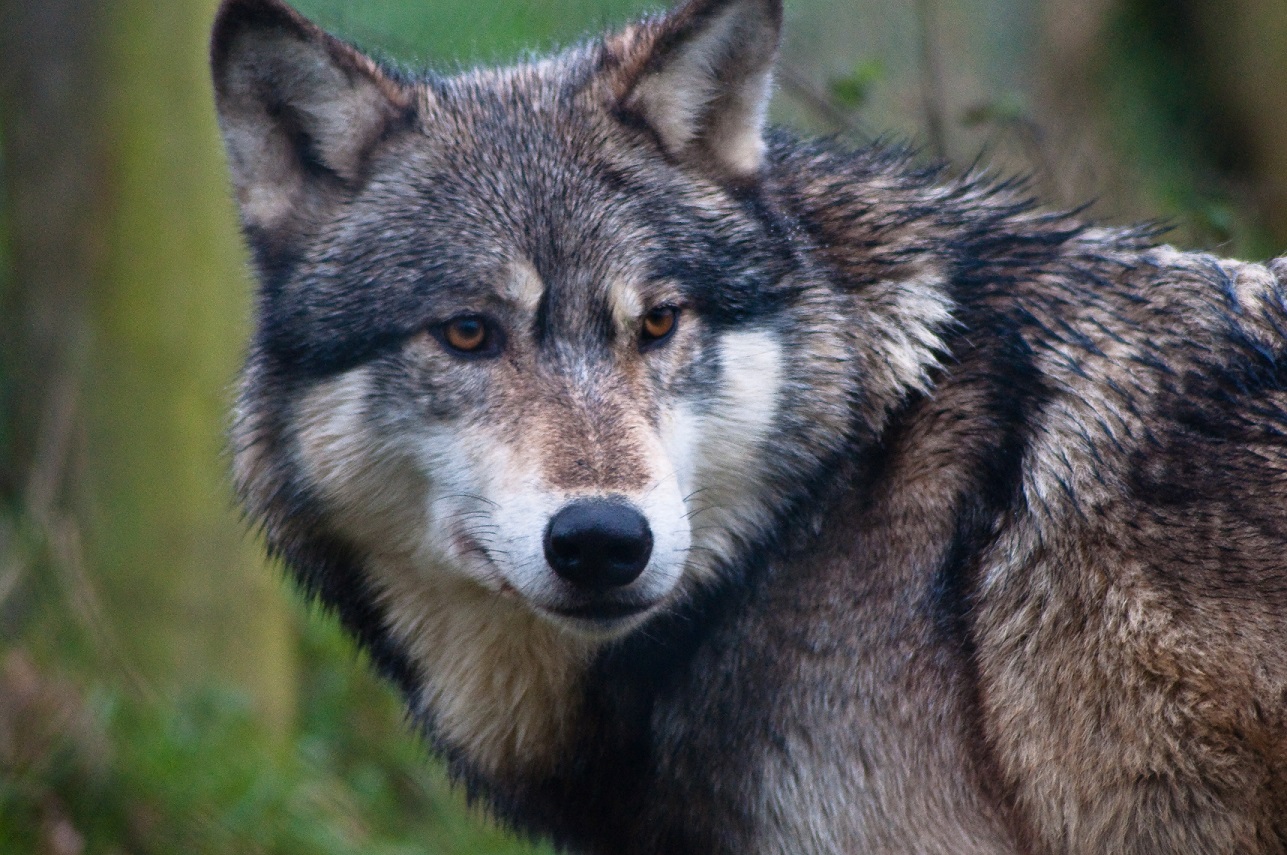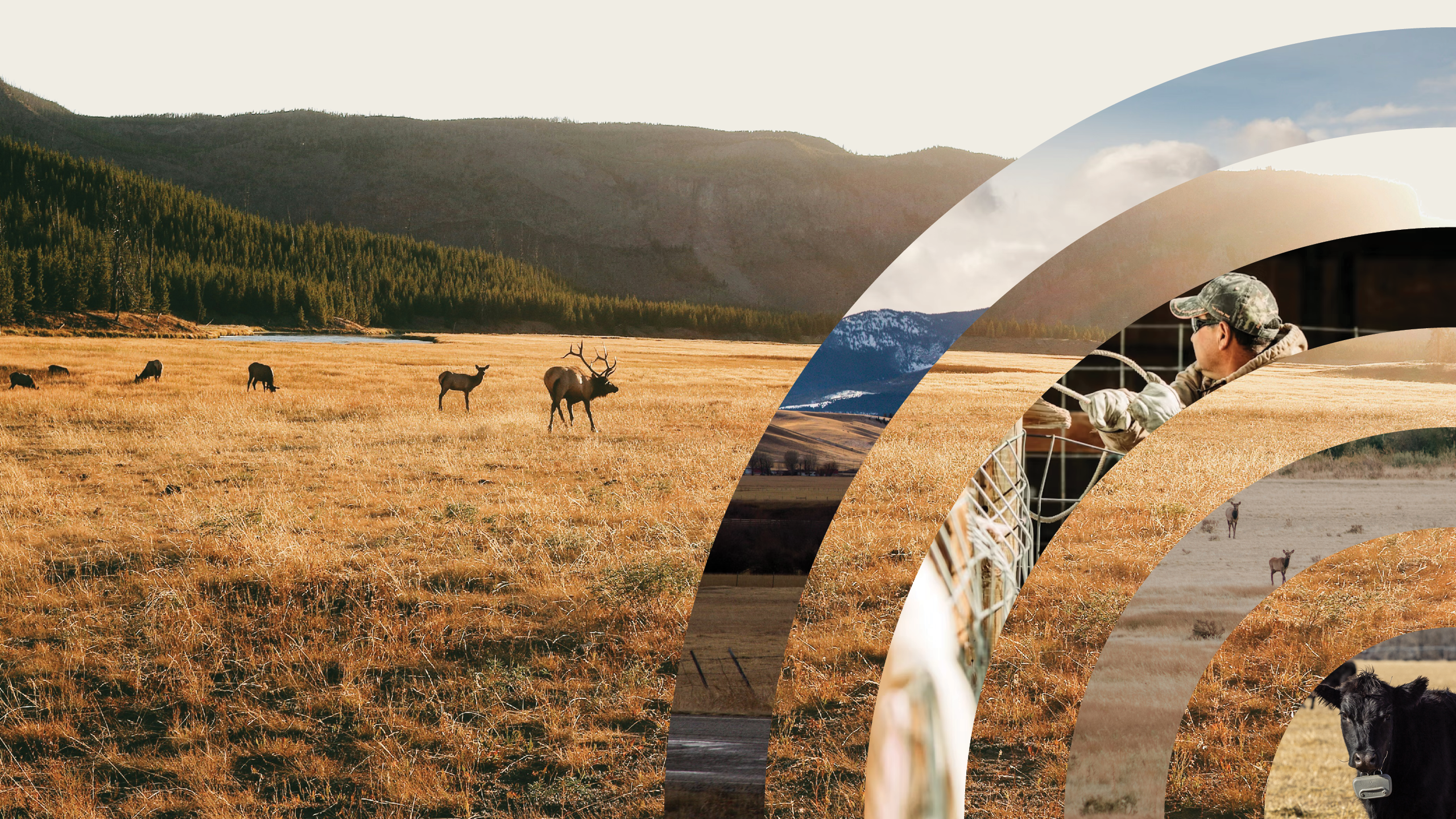I confess to having no greater affection for wolves than for any other creature. I don’t wear a wolf hat, I don’t collect wolf pictures, and I don’t even own a wolf coffee mug. My passion is with Yellowstone’s natural system as a whole. I’m captivated by the intricate interplay of wolves with elk, aspen, beetles, ravens, fire, weather, and people–the part of the equation often overlooked. All these parts, plus thousands we’ve yet to understand, working together in a random yet reciprocal way, create the wildness that we know as Yellowstone.
Modern ecologists suggest that the large predators “are the big things that run the world.” They create changes that ripple through the entire system, affecting everything from elk down to the smallest clump of bluebunch wheatgrass. I want to help restore a place in North America where we have as full a complement of an ecosystem as we can have, something to measure other ecosystems against. We are beginning to have that in the greater Yellowstone region.
Incentives are critical to wolf conservation. My first insight into their importance came in a small schoolhouse in St. Anthony, Idaho, in 1984. I had brought together about twenty livestock producers from the area who would be affected by reintroduction of wolves. I thought that if I could better understand their concerns, together we could figure out what we needed to do to bring wolves back to Yellowstone National Park and central Idaho.
As I entered that schoolhouse, I was confronted by a sea of cowboy hats. I immediately recognized one old sheep rancher I had previously had some run-ins with over predator control issues. As I started my talk he stood up and bellowed, “Hank Fischer, you mean nobody’s kilt you yet?” Actually, he was trying to be friendly, but the humor reveals how tense everybody was.
I explained to the ranchers that wolves aren’t like grizzlies. They have a high reproductive rate; they’re not attracted to humans; and livestock losses to wolves are not very high. A rancher stood up and said, “It’s easy to be a wolf lover. It doesn’t cost anything. It’s the people who own livestock who end up paying for wolves.” I explained to him that in Minnesota the state offers a compensation program, and that perhaps such a program could be developed in Idaho and Montana. His response: “Hope is a good breakfast but it’s a mighty poor supper.” As I closed up the meeting, one of the final questions was, “What’s the best caliber to shoot a wolf with, anyway?”
As I started my talk an old sheep rancher stood up and bellowed, “Hank Fischer, you mean nobody’s kilt you yet?”
The ranchers may not have learned much from me, but I picked up a few things. Foremost, I learned that I didn’t have a good answer for their most central question: why should they have to pay the costs of wolf introduction?
About a year later Defenders of Wildlife sponsored an exhibit about wolves that traveled around the country. At the time, it was the largest wildlife exhibit ever constructed. Its purpose was to get people to examine how they felt about wolves and why. Defenders decided to bring the exhibit to Yellowstone Park to get the public and the Park Service thinking about Yellowstone wolf restoration.
That was when I had a chance to talk to William Penn Mott, Ronald Reagan’s National Park Service director. He seemed to speak off the top of his head, but he offered me the most farsighted piece of wolf wisdom anyone has ever given me. He said, “The single most important action that conservation groups could take to advance Yellowstone wolf restoration would be to start a compensation fund. It’s economics that makes ranchers hate wolves. Pay them for their losses and the controversy will subside.”
In 1987, wolves were returning naturally to northwestern Montana (near Glacier National Park), and that summer wolves killed livestock east of Browning. The ranchers lost several thousand dollars’ worth of livestock, and they were angry. The issue was in the newspapers for months. Given this anger, I had to think about how we could put a better face on wolf restoration.
The only solution was to pay these ranchers for their losses. I sent a fund-raising letter to several Defenders of Wildlife members in Montana, and I had the necessary funds within 48 hours. We paid about $3500 to those ranchers. Suddenly, the wolf/livestock conflict was no longer an issue dominating the newspapers. It disappeared. I went back to my organization and said, “Let’s keep doing this.”
To raise money, Montana artist Monte Dolack created his vision of how wolves might look if restored to Yellowstone Park. We sold posters of this artwork for $30 each and raised over $50,000. We were on our way to a permanent program.
Since 1987, when we made the first payment in Browning, we have paid approximately $175,000 to ranchers for wolf compensation. The program covers Montana, Idaho, Wyoming, Arizona, and New Mexico. In 1997 Defenders initiated a grizzly bear compensation program for Montana and Idaho (Wyoming has its own state program). That program has paid over $60,000 for livestock losses caused by bears.
We try to make these programs as simple as possible, and we do not require the ranchers to do any paperwork. We rely on state or federal agencies to verify the losses. When I learn about a probable wolf kill, I typically call the livestock producer and talk with him or her. These are important conversations, a half-hour to an hour long. I want the ranchers to tell what happened as they see it. Through these conversations I’m trying to bridge the gap between people who may not want wolves and my organization, which is committed to wolf restoration.
I’m trying to bridge the gap between people who may not want wolves and my organization, which is committed to wolf restoration.
Many ranchers tell me, “I don’t mind having wolves around, but I can’t afford to have them killing my livestock.” In a sense, we are attempting to make a contract. Our side of the contract is that wolves that kill livestock will be controlled (moved, relocated, or killed). Their side of the contract is to tolerate wolves that do not kill livestock.
Livestock producers have made important suggestions that have allowed us to improve our compensation program. For example, an animal killed in March or April–say, a young lamb–has a low market value. But the owner has made an investment based on the value of the sheep that will go to market in the fall. So we compensate ranchers not at current market value, but at the fall value of their livestock.
Another issue was how to handle situations where it appeared likely that wolves killed livestock, yet it couldn’t be determined for certain. To deal with this gray area, we set up a category we call “probable” losses. In such situations we compensate at fifty percent of market value instead of full market value.
Since the reintroduction program began in 1995, the number of wolves in the wild in Yellowstone and central Idaho has gone from zero to over four hundred animals. Currently there are thirteen wolf packs in Yellowstone.
It’s time to move past the stage of conflict. Many people on both sides are still fighting. Some ranchers still argue that wolves should never have been reintroduced in the first place, and some environmentalists still argue that government protections for wolves are too weak. Both ignore the reality that wolves are now present in healthy numbers and are here to stay.
The important issue now is how broadly wolves will be distributed across the West. Currently wolves are limited primarily to national parks and wilderness areas. If wolves are to recolonize other areas, people may need to make changes in their livestock operations. The issue once again revolves around economics: who should pay for these changes?
My view is that people who support wolf recovery should help pay the costs. Last year Defenders created a new Proactive Carnivore Conservation Fund. This fund supports collaborative projects that we develop with livestock producers designed to prevent wolf and grizzly predation on livestock from occurring in the first place. It might involve sharing the cost of constructing a secure night pasture for sheep, it might involve “bear-proofing” garbage dumpsters, or it might involve constructing an electric fence around beehives. Or if wolves were denning in a pasture normally used by livestock, Defenders might share the cost of finding alternate pasture. When people start working together, we find that there are many ways for wolves and livestock grazing to coexist.
At the same time, there may be situations where we have paid compensation and taken proactive measures to avoid predation, yet predator/livestock conflicts remain. Some areas are so attractive to large carnivores that it may be hard to keep them away. The solution may be to offer ranchers an incentive to shift to a different location. If they are having constant problems with grizzlies on their grazing allotment, it might be in the ranchers’ interest as well to move to a new location.
In sum, the people who support wolves need to take economic responsibility for them. But this program is about a lot more than money. It’s about respecting what the ranchers do. Eventually, I want wolves to be just another animal, not up on a pedestal as they are now. I want to get past the point where they are such a big deal. I want them to be an important part of a large and healthy ecosystem.




